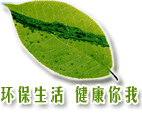原文:
Homeopathy's "Law of Similars"
Stephen Barrett, M.D.
Proponents call homeopathy's defining principle the "Law of Similars." ("Like cures like.") This holds that substances that cause healthy people to get symptoms can cure diseases that have these symptoms. This idea is a form of "sympathetic magic" similar to the primitive idea that eating the heart of a lion will make a person brave.
Homeopathy's founder, Samuel Hahnemann, M.D., is said to have based his theory on an experience in which he ingested cinchona bark, the source of quinine used to treat malaria. After taking it, he experienced thirst, throbbing in the head, and fever -- symptoms common to malaria. He decided that the drug's power to cure the disease arose from its ability to produce symptoms similar to the disease itself. He and his early followers then conducted "provings" in which they administered herbs, minerals, and other substances to healthy people, including themselves, and kept detailed records of what they observed.
The symptoms reported during provings have been compiled into lengthy reference books called materia medica, which proponents regard as gospel. However, most of the provings were done between 100 and 200 years ago, when medical science was in its infancy. Very little was known about the nature of health and disease or about how to conduct experiments that separate cause and effect from coincidence.
The fact that a symptom occurs after taking a substance can have several explanations. During a typical day, most people experience occasional unpleasant thoughts and bodily sensations. To determine whether a substance actually causes a symptom, it would be necessary to compare people who receive the substance with people who receive a control substance. To guard against bias, neither the experimenters nor the test subjects should know who gets which.
The provings used to compile materia medica were not conducted in this manner. There were wide variations in the amounts of substances administered, the timing of the administrations, the way in which data were recorded, and the length of the studies -- and there were no controls. Thus it is impossible to know whether the reported symptoms were actually related to administration of the test substances. In addition, many symptoms may have resulted from suggestibility of the test subjects.
"A Dictionary of Practical Materia Medica," a widely used 3-volume set authored by John Henry Clarke, M.D., illustrates the foolishness involved in provings. The book contains about 2,500 pages that describe the symptoms that supposedly were reported following administration of about 1200 substances. Most descriptive pages contain more than 100 claims, which means that total number of symptoms exceeds 200,000. The book does not indicate when or how the original "provings" were done or who reported most of the specific findings. Thus it would be impossible to examine whether the studies were properly done, who did them, and whether the findings were accurately reported.
Many of the listed symptoms are odd. Lac felinum includes "Cannot bear the smell of clams, of which she is naturally fond." Lacrodectus mactans includes "Screams fearfully, exclaiming that she would lose her breath and die." Magnesia sulphurica includes "stupidity." Oleum animale includes "Singing, tinkling, and buzzing in ears." Natrum carbonicum includes "hurries out of bed in the morning." Some listings include symptoms that occur predominantly on one side of the body, such as "sickening sensation in left testicle." All are supposedly useful in determining whether the patient might "fit" a particular remedy.
Even if the proving reports were consistent, there is no logical reason why substances that could produce symptoms should cure such symptoms. Nor is there evidence from appropriately designed studies that the "law of similars" actually operates. The real way to test something works is to test whether it helps sick people. This requires clinical trials in which people who get the test substance are compared with people who do not. No homeopathic product has ever been proven effective; and the vast majority of products have never even been clinically tested.



 加好友
加好友  发短信
发短信
 芳香自然
芳香自然
 Post By:2010-3-25 19:45:59 [只看该作者]
Post By:2010-3-25 19:45:59 [只看该作者]




 加好友
加好友  发短信
发短信
 芳香自然
芳香自然
 Post By:2010-3-25 19:46:52 [只看该作者]
Post By:2010-3-25 19:46:52 [只看该作者]

